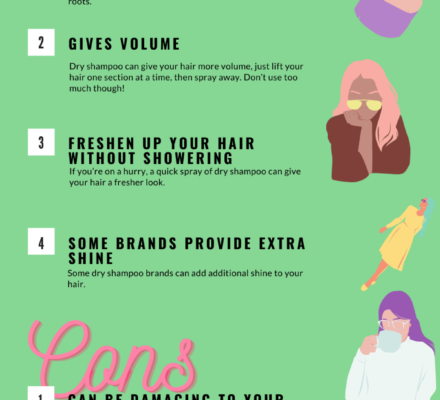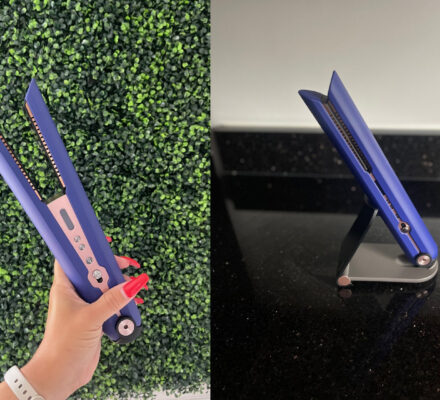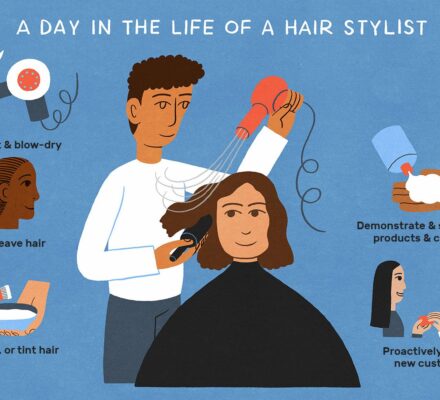So you’ve probably heard of infrared heat being used in various beauty tools, such as hair dryers and straighteners. But what exactly is infrared heat, and more importantly, is it safe for your hair? Infrared heat is a type of heat that is able to penetrate the hair shaft, resulting in faster drying and styling times. However, the question remains – is this intense heat damaging to your luscious locks? In this article, we’ll explore the safety of infrared heat for hair and provide you with all the information you need to make an informed decision about incorporating it into your beauty routine.
Overview of Infrared Heat for Hair
What is Infrared Heat?
Infrared heat is a form of heat that is commonly used in hair styling tools such as flat irons and hair dryers. Unlike traditional heat sources, such as direct heat or steam, which mainly heat the surface of the hair, infrared heat penetrates the hair shaft and heats it from within. This type of heat is known for its ability to provide even and consistent heating, resulting in smoother, sleeker hair with less damage.
How is Infrared Heat Used for Hair?
Infrared heat technology is incorporated into various hair styling tools, including flat irons, curling irons, and hair dryers. These tools emit infrared rays, which penetrate the hair cuticle and heat the hair from the inside out. This deep penetration helps to seal in the hair’s natural moisture, reduce frizz, and create a smoother, shinier finish. The use of infrared heat can also help to minimize damage and retain the hair’s natural shine and health.
Advantages of Infrared Heat for Hair Styling
Using infrared heat for hair styling comes with several advantages. First and foremost, it can help to minimize heat damage compared to traditional heat sources. The deep penetration of infrared heat allows for a more even distribution of heat, reducing the likelihood of hot spots that can lead to hair damage. Additionally, the use of infrared heat can help to seal the hair cuticles, locking in moisture and reducing frizz. This can result in smoother, shinier hair that is less prone to breakage and damage. Finally, infrared heat can also speed up the styling process, as the heat penetrates the hair more efficiently, reducing the overall styling time.
Understanding Hair Structure
Anatomy of Hair
To understand how heat affects the hair, it is important to have a basic understanding of the hair’s anatomy. The hair is composed of three main layers: the cuticle, cortex, and medulla. The cuticle is the outermost layer and serves as a protective barrier for the hair shaft. The cortex is the middle layer and contains the hair’s natural pigments and protein structures. Finally, the medulla is the innermost layer, which is present in some hair types but absent in others.
How Does Heat Affect Hair?
When the hair is exposed to heat, the heat causes the hair’s proteins to break down. This can lead to damage such as dryness, brittleness, and breakage. Excessive heat can also cause the hair cuticles to lift, resulting in frizz and a rough texture. Different hair types have varying levels of heat tolerance, with some hair types being more susceptible to heat damage than others.
Different Hair Types and Heat Tolerance
Hair types can be categorized into various categories, such as straight, wavy, curly, and coily. The degree of heat tolerance varies among these hair types. Generally, straight hair has a higher tolerance for heat compared to curly or coily hair. This is because straight hair has a smoother cuticle, allowing for better heat distribution and less damage. Curly and coily hair, on the other hand, have a more uneven cuticle surface, making them more prone to heat damage. It is important to take into account your hair type when using heat styling tools, including those with infrared heat.
Potential Risks of Infrared Heat
Excessive Heat Damage
While infrared heat can be beneficial for hair styling, excessive heat exposure can still lead to damage. It is important to use infrared heat tools responsibly and avoid prolonged exposure to high temperatures. Failure to do so can result in dryness, breakage, and other forms of heat damage.
Dryness and Moisture Loss
Using infrared heat can cause the hair to lose moisture, resulting in dry and brittle hair. The heat can evaporate the hair’s natural oils, leaving it depleted of moisture. This can make the hair more prone to breakage and can affect its overall health and appearance.
Hair Fragility and Breakage
Excessive heat can weaken the hair’s protein structure, making it more fragile and prone to breakage. This is especially true for hair types that are naturally more fragile, such as curly and coily hair. Heat damage can cause the hair to become weak and lead to split ends and breakage. It is important to use heat styling tools with caution and take preventive measures to minimize the risk of hair fragility and breakage.
Choosing the Right Infrared Heat Tool
Quality and Safety Features
When selecting an infrared heat tool, it is crucial to consider the quality and safety features of the product. Look for tools that are made from high-quality materials and have safety features such as automatic shut-off and temperature control. These features can help to prevent overheating and minimize the risk of heat damage to your hair.
Adjustable Temperature Settings
Having adjustable temperature settings is essential when using infrared heat tools. Different hair types have different heat tolerance levels, and having the ability to adjust the temperature allows you to find the optimum heat level for your hair. Start with the lowest temperature setting and gradually increase it until you achieve the desired results without causing excessive heat damage.
Ceramic or Tourmaline Technology
Choose infrared heat tools that utilize ceramic or tourmaline technology. These materials help to distribute heat evenly and reduce the risk of hot spots. Ceramic technology also emits negative ions, which can help to counteract the positive ions that cause frizz. Tourmaline technology, on the other hand, produces even more negative ions, resulting in smoother, shinier hair.
Brand Reputation and Reviews
Before purchasing an infrared heat tool, it is advisable to research the brand’s reputation and read customer reviews. Look for brands that are known for their quality and reliability. Customer reviews can provide valuable insights into the performance and durability of the product. This information can help you make an informed decision and choose the right infrared heat tool for your hair.
Preparation and Protection for Heat Styling
Using Heat Protectant Products
Prior to using any heat styling tool, it is crucial to apply a heat protectant product to your hair. Heat protectant sprays or serums create a barrier between the hair and the heat, reducing the risk of damage. These products can help to minimize moisture loss and shield the hair from excessive heat exposure.
Detangling and Prepping Hair
Before applying heat to your hair, it is important to detangle and prepare it properly. Use a wide-tooth comb or a detangling brush to gently remove any knots or tangles. This helps to prevent hair breakage and ensures that the heat is evenly distributed throughout the hair.
Avoiding Heat Styling on Wet Hair
Infrared heat tools should never be used on wet or damp hair. Wet hair is more vulnerable to heat damage, as the water in the hair can reach boiling temperatures under high heat. It is recommended to thoroughly dry your hair before using any heat styling tools to avoid unnecessary damage.
Limiting Frequency of Heat Styling
To minimize the risk of heat damage, it is important to limit the frequency of heat styling. Overusing heat tools, even those with infrared heat, can lead to cumulative damage over time. Allow your hair regular breaks from heat styling and embrace natural hairstyles to give your hair time to recover and maintain its overall health.
Proper Techniques for Using Infrared Heat
Maintaining Optimal Temperature
When using an infrared heat tool, it is crucial to maintain the optimal temperature for your hair type. As mentioned earlier, different hair types have varying heat tolerance levels. Start with a lower temperature setting and gradually increase it until you achieve the desired results without excessive heat damage. Pay attention to how your hair responds to the heat and adjust accordingly.
Even Heat Distribution
To ensure even heat distribution, it is recommended to divide your hair into small sections when styling. This allows the heat to penetrate each section more effectively, reducing the need for excessive heat exposure. By working with small sections, you can also achieve more precise and controlled styling results.
Sectioning and Working with Small Portions
Sectioning your hair and working with small portions at a time can make the styling process easier and more efficient. This prevents overwhelming the hair with excessive heat and allows you to focus on each section individually. It also helps to reduce the risk of uneven styling and ensures that all areas of the hair receive proper heat treatment.
Avoiding Overuse on a Single Area
When using infrared heat tools, it is important to avoid overusing them on a single area of the hair. Prolonged exposure to heat in one spot can lead to excessive heat damage. Keep the tool moving through each section to evenly distribute the heat and minimize the risk of localized heat damage.
Other Factors to Consider
Hair Care Routine and Overall Hair Health
In addition to heat styling, it is important to consider your overall hair care routine and the health of your hair. Regular deep conditioning treatments, moisturizing products, and protein treatments can help to maintain the health and integrity of your hair. Incorporating these treatments into your hair care routine can help to offset any potential damage from the use of heat styling tools.
Using Heat Styling in Combination with other Treatments
If you are undergoing other hair treatments, such as chemical treatments or coloring, it is important to consider the potential effects of heat styling. Some treatments may make the hair more susceptible to heat damage, and using infrared heat tools should be approached with caution. Consult with your hair professional or stylist to determine the best course of action for your hair.
Consulting Hair Professionals or Stylists
When in doubt, consult with a hair professional or stylist who can provide personalized advice and recommendations. They can assess the condition of your hair and provide insights on how to incorporate infrared heat styling into your routine safely. They can also provide guidance on proper techniques, suitable products, and how to maintain optimal hair health.
Scientific Studies and Research
Studies on Infrared Heat Effects on Hair
Scientific studies have been conducted to evaluate the effects of infrared heat on the hair. These studies have shown that infrared heat can help to reduce moisture loss, increase shine, and minimize damage compared to traditional heat sources.
Comparisons with Traditional Heat Sources
Comparative studies have also been conducted to assess the differences between infrared heat and traditional heat sources in terms of their impact on the hair. These studies have consistently shown that infrared heat technology can be beneficial for reducing damage and improving overall hair health.
Importance of Controlled Experiments
Controlled experiments are essential to understand the effects of infrared heat on hair. These experiments involve carefully monitoring variables such as heat exposure time, temperature, and hair type. By controlling these variables, researchers can obtain accurate and reliable data on the effects of infrared heat on the hair.
Safe Practices for Infrared Heat Hair Styling
Moderation and Sensible Usage
To ensure safe heat styling with infrared heat, moderation and sensible usage are key. Avoid excessive heat exposure and limit the frequency of heat styling. Give your hair regular breaks from heat styling to minimize the risk of cumulative damage.
Monitoring and Limiting Exposure Time
Keep a close eye on the amount of time your hair is exposed to infrared heat. Each hair type has its own tolerance level, and it is important to respect your hair’s limits. Monitor the condition of your hair and adjust your styling routine accordingly to prevent excessive heat damage.
Regular Hair Moisture and Protein Treatments
To offset the potential moisture loss and damage from heat styling, regular hair moisture and protein treatments are essential. Deep conditioning treatments, leave-in conditioners, and protein treatments can help to replenish and strengthen the hair, keeping it healthy and resilient.
Conclusion
Balancing the desire for stylish and well-maintained hair with the health of your hair is essential when using infrared heat for hair styling. While infrared heat can provide benefits such as reduced damage, smoother hair, and faster styling, it is important to use this technology responsibly. Consider your hair type, follow safe practices, and always prioritize the health and integrity of your hair. By doing so, you can make informed choices and enjoy the benefits of infrared heat styling while keeping your hair safe and healthy.



